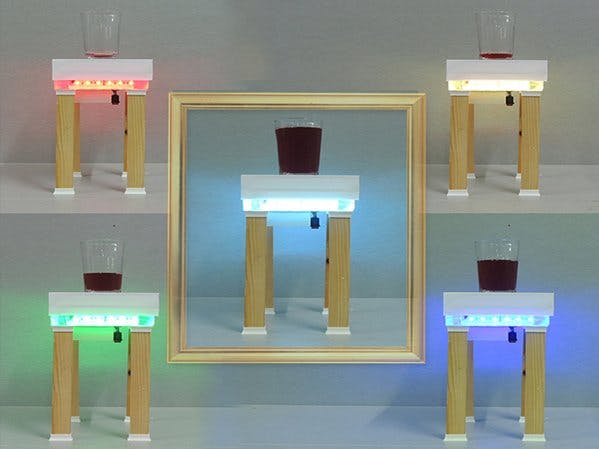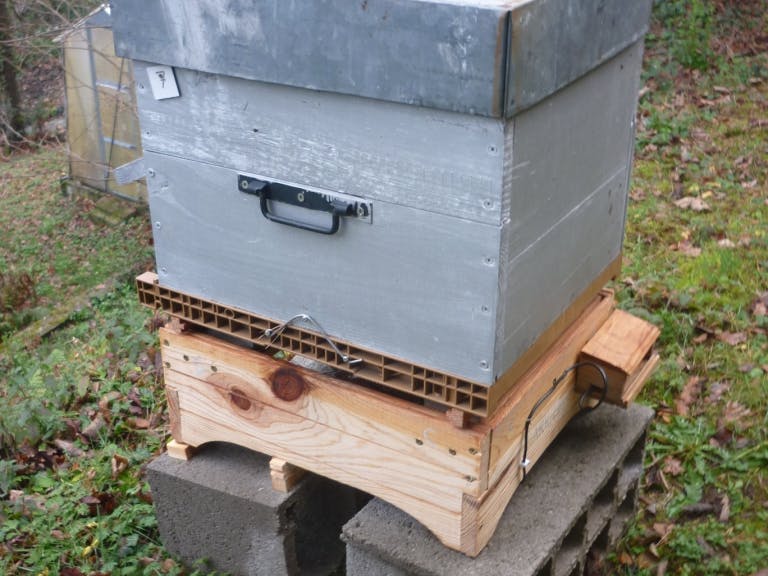10 Things you can do with your HX711 and Load Cell
Ever heard of the HX711 and Load Cell? They are commonly used together to create weighing scales. But do you know what else you can do with it? In today’s article, we will be showing you 10 things you can create with HX711 and Load Cell!

Through this article, we will be covering:
- Introduction to HX711 and Load Cell
- 10 HX711 and Load Cell Project Ideas
Introduction to HX711 and Load Cell
What is the HX711?
- The HX711 is a precision 24-bit analog-to-digital converter (ADC) that is designed for weighing scales and industrial control applications to interface directly with a bridge sensor.
- It is specially made for amplifying signals from cells and reporting them to another microcontroller.
- Our Grove – ADC for Load Cell (HX711) is a 24-bit A/D converter designed specifically for the load cell. It contains an on-chip low noise programmable amplifier with an optional gain of 32, 64 and 128.
- The HX711 chip integrates a regulated power supply, an on-chip clock oscillator, and other peripheral circuits, which have the advantages of high integration, fast response, and strong anti-interference.
- With the Grove I2C connector and 4-pin screw terminal, it becomes quite easy to connect the load cell and microcontroller, no soldering required. You can build your own Arduino weigh sensor system in just a few simple steps.
What is a Load Cell / Weight Sensor?

- A load cell is an instrument that helps to determine the size of a load (either a force or weight) and converts the force into measurable electrical output.
- They have many purposes including being able to tell the weight of something, weight change over time and also capable of measuring strain and load on a surface
- A load cell consists of a metal core and a set of electrical resistances that transform when a force is applied to it. But after the force is removed, it returns to its original state. The reversibility of this material determines the quality and accuracy of the load cell.
- They work by converting mechanical force into digital values and they come in various shapes and sizes which differs in the amount of weight that they can measure.
- For example, some weights that they can measure are 0 to 500g, 0 to 10kg, 0 to 50kg and even 0 to 800kg.
- They are perfect for electronic scales, price computing scales, electronic platform scales, digital scales; parcel post scales, electronic balance and all varieties of commercial scales where weight is involved!
- With the combination of the HX711, it is able to get measurable data out from a load cell and strain gauge.
- To use a load cell, you will have to first calibrate it where you can increase or decrease the calibration factor units to get your correct weight using a microcontroller or microprocessor.
- Load Cells come in many shapes and sizes! Here at Seeed we offer the Bar-type load cell:
- Single Strain Gauge Load Cells
Interested? You can check out all of our Load cells and weight sensors here!
Without further ado, let us jump right into 10 things that you can do with the HX711 and Load Cell!
10 HX711 and Load Cell Project Ideas
1. Arduino HX711 and Load Cell Scale

One of the most common and simple projects with the HX711 and Load Cell will definitely be using it to make a weighing scale together with the Arduino. Through this project, you will be learning how to make a small weighing scale.
What do you need?
- Seeeduino V4.2 / Arduino UNO Rev3 / Seeeduino Nano /
Arduino Nano v3 - Grove – ADC for Load Cell (HX711)
- Any Load Cell
- 2 x Sturdy Flat Mounting Surface
Interested? You can find the full tutorial by DegrawSt on Instructables!
2. Smart Coffee Table

With the HX711 and load cell together with the Arduino Nano, you can create a cool coffee table that changes colour according to the weight of your drink!
What do you need?
- Grove – ADC for Load Cell (HX711)
- Weight Sensor (Load Cell) 0-50kg
- Seeeduino Nano / Arduino Nano v3
- Linear Regulator (7805)
- Resistor 10k ohm
- Grove – WS2813 RGB LED Strip Waterproof – 60 LED/m – 1m
- BD 135 Transistor
- Mini Soldering Iron – US Standard (Shape-BC2) (or any Solder Iron
- 3D printer (For printing Coffee Table Structure)
Interested? You can find the full tutorial by TheTNR on Arduino Project Hub here!
3. HX711 and Load Cell Arduino Punching Bag

Do you know, apart from measuring weight, the load cell can also be used as a force gauge to measure force in newtons. Through this project, you will learn how to measure your fist power using a load cell and HX711 together with the Arduino.
What do you need?
- Seeeduino V4.2 / Arduino UNO Rev3
- Weight Sensor (Load Cell) 0-50kg
- Grove – ADC for Load Cell (HX711)
- Grove – 16 x 2 LCD (Black on Yellow)
- Arduino IDE software
Interested? You can find the full tutorial by Electropeak on Arduino Project Hub!
4. Raspberry Pi Kitchen Scale

As most scales do not work analogously, it will also be possible to measure weights with a digital Raspberry Pi scale similarly to the Arduino. Through this project, you will learn how to make a precise Raspberry Pi kitchen scale.
What do you need?
- Grove – ADC for Load Cell (HX711)
- Any Load Cell
- 2 x Sturdy Flat Mounting Surface
- Raspberry Pi 4 Computer Model B 4 GB
- Breadboard Jumper Wire Pack(200 mm&100 mm)
- Breadboard Clear – 8.2 × 5.3 cm
Interested? You can find the full tutorial on Raspberry Pi Tutorials!
5. Raspberry Pi Arduino Intelligent Tea Sensor

Do you ever find yourself opening up a teabag/coffee container with no tea or coffee beans? This is one of the saddest moments that one could experience so we’ve got a solution to solve it! With this project, we will be building an intelligent tea bag container sensor to estimate the number of tea bags left which will inform us if we start to run out.
What do you need?
- Raspberry Pi 4 Computer Model B 4 GB
- Seeeduino V4.2 / Arduino UNO Rev3
- Grove – ADC for Load Cell (HX711)
- Any Load cell between 3KG and 15KG
- Reed Switch
- Magnet
- 10KΩ resistor
- Speaker
- 3.5mm Cable for Speaker
- USB B Cable for connection between Raspberry Pi and Arduino.
Interested? You can find the full tutorial on All About Circuits!
6. Raspberry Pi Automatic Gate

Ever seen automatic gates being opened when someone is standing near it which automatically closes after the person leaves? Most automatic gates like those are often expensive and if you do not wish to buy one, why not build one! Through this project, you will be building a pressure sensing gate that will open automatically when pressure is detected and closed after the weight is removed.
What do you need?
- Raspberry Pi 4 Computer Model B 4 GB
- Grove – ADC for Load Cell (HX711)
- L293D Motor Driver IC
- Weight Sensor (Load Cell) 0-40kg
- 130 DC Motor or Electric Gate or DVD Trolley
- Grove – 16 x 2 LCD (Black on Yellow)
- Power Source
- Breadboard Clear – 8.2 × 5.3 cm
Interested? You can find the full tutorial on CircuitDigest!
7. HX711 Raspberry Pi Automatic Dog Feeder

Afraid that your pet would go hungry in the event you forget to feed it or going overseas where you will leave your dog home at home alone? With this project, you do not worry at all as your dog will be able to get food whenever he/she is hungry! This automatic feeder contains a wheel at the bottom which is connected to a servo motor that will automatically drop food when the crib is nearly empty or when the dog is close.
This project also features 2 sensors! Firstly, it is an RFID reader where an RFID tag will be attached to the dog which will sense whether the dog is nearby. Secondly, it will be a light sensor that will light up an LED when it is dark!
Have a cat? This would work perfectly too! You can use it for any small pet you have.
What do you need?
- Raspberry Pi 4 Computer Model B 4 GB
- Weight Sensor (Load Cell) 0-3kg
- Grove – ADC for Load Cell (HX711)
- Grove – Light Sensor v1.2
- LED (Generic)
- Grove – 16 x 2 LCD (Black on Yellow)
- Grove – Servo
- Breadboard Clear – 8.2 × 5.3 cm
- Resistor 470 Ohm
- USB Power Adapter for Raspberry Pi 4 – 5V, 3A
- Grove – Slide Potentiometer
- RFID tag combo (125khz) – 5 pcs
- Grove – 125KHz RFID Reader
Interested? You can find the full tutorial by RobbeSaelens on Intrsuctables!
8. Arduino Smart Scale with ESP8266
We have already made normal kitchen scales and weighing scales, now with this project, we are going to make a smart scale! This smart scale is able to keep track of your weight by sending it to the cloud where you will see your weight gain or loss process. In addition, this smart scale functions as an alarm clock which will continue ringing until the user stands on it for a few seconds making sure you wake up!
What do you need?
- WiFi Serial Transceiver Module w& ESP8266 – 1MB Flash
- Grove – Red LED Matrix w/Driver
- 4 x Load Sensor
- Grove – ADC for Load Cell (HX711)
- Grove – Buzzer
- 3D Printer (Printing the case)
- Mini Soldering Iron – US Standard (Shape-BC2) (or any Solder Iron
Interested? You can find the full tutorial by igorfonseca83 on hackaday.io!
9. Arduino Smart Plastic Container

With this project, you will build yourself a special plastic container where it is able to keep track of stocks stored inside which can send notifications to the cloud and also lighting up an alarm LED when stocks are low.
What do you need?
- ARDUINO MKR1000
- Grove – ADC for Load Cell (HX711)
- Weight Sensor (Load Cell) 0-40kg
- Grove – 16 x 2 LCD (Black on Yellow)
- LED (Generic)
- Mini Soldering Iron – US Standard (Shape-BC2) (or any Solder Iron
Interested? You can find the full tutorial by Andrea De Gaetano on Arduino Project Hub!
10. Arduino HX711 BeeHive Monitoring and Tracking

With this project, you can now monitor your bees if you have any! Through this, you can monitor bee health, honey production, swarming bees, diseases, pesticides influence and even if someone steals your beehive! Want to monitor and track other things like your pet birds? With the similar concept, you can do so too!
What do you need?
- Seeeduino Nano / Arduino Nano v3
- Maxim Integrated DS18B20 Programmable Resolution 1-Wire Digital Thermometer
- Grove – ADC for Load Cell (HX711)
- Weight Sensor (Load Cell) 0-50kg
- Temperature-Humidity Sensor-DHT22(AM2302)
Interested? You can find the full tutorial by sgoutteb on Arduino Project Hub!
Summary
That’s all for 10 Things that you can do with the HX711 and Load Cell! What are your thoughts on all these projects? Do let us know in the comments down below!
For more information regarding the HX711, you can check out the following:


